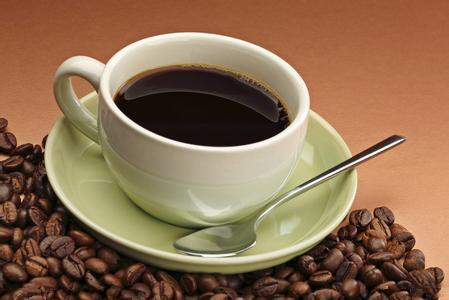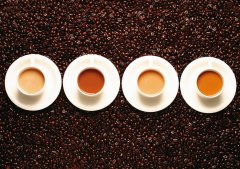The meaning of coffee basic knowledge mocha (Mocha)

Sitting in a cafe, flipping through recipes, reading coffee magazines, you will inadvertently encounter many mocha (Mocha) although it is a simple word, but it has many meanings.
1. coffee beans
The earliest mocha refers to a coffee bean exported from the port of mocha in Yemen. It is produced in Ethiopia in Africa and is one of the most acidic coffees. Mocha coffee is also known as "Ethiopian coffee."
Second, coffee.
When used in flavored fancy coffee, mocha refers to hot coffee with hot chocolate and whipped cream, because mocha originally means chocolate.
Third, finger coffee pot
In terms of coffee making appliances, mocha refers to a delicate and compact mocha pot, which is a pot that uses steam to quickly extract coffee. This pot is known for its varied shapes.
Mocha pot was introduced in 1933, its structure has never changed, but the appearance and use of materials are constantly changing. The earliest mocha pots were made of aluminum, but aluminum easily reacted with acidic substances in coffee, producing a bad taste, and later gradually changed to stainless steel and even partially made of heat-resistant glass. The mocha pot consists of two parts, the upper and lower, which are combined into one by rotating. The lower part of the pot is a cavity for holding water, the upper end of the cavity is provided with a safety vent, and the upper part of the cavity is a filter full of small holes for holding coffee powder. The top half of the pot is a covered container with a handle for holding coffee liquid, and the bottom of the container is a filter mesh with a rubber ring. In the center is a hollow metal tube that allows coffee to seep out. When brewing coffee in a mocha pot, first fill the lower chamber with water, but do not exceed the safety vent. Fill the filter with ground coffee. The filters have been carefully designed size by experts, so there is no need to measure the amount of coffee powder, just fill the filter. Then cover the upper and lower chambers tightly and put them on the fire to cook.
Mocha pot belongs to the use of high-pressure steam extraction coffee appliances, with small size, elegant appearance, simple operation, brewing fast and other characteristics, so mocha pot is very suitable for family use. Coffee brewed in mocha pots is also called mocha coffee, although it is not really espresso coffee, but it can be said to be double strong coffee.
Important Notice :
前街咖啡 FrontStreet Coffee has moved to new addredd:
FrontStreet Coffee Address: 315,Donghua East Road,GuangZhou
Tel:020 38364473
- Prev

General knowledge of fancy Coffee the characteristics of mocha coffee
Mocha coffee is produced in Ethiopia. Beans are small and fragrant, with strong sour and mellow taste, moderate sweetness and special flavor. Washed coffee beans are well-known high-quality coffee, often drunk on a single basis. However, if mixed coffee can be blended, it is a kind of comprehensive coffee with ideal flavor. Ethiopia, known as the birthplace of coffee, has a history of coffee origin and a traditional agricultural country.
- Next

A classic blend of espresso and milk.
Latte is a classic blend of Italian espresso and milk. Italians also like lattes as breakfast drinks. In the Italian kitchen in the morning, coffee and milk are usually brewed on the sunlit stove. Italians who drink lattes like milk rather than espresso, and only coffee can be given to ordinary people.
Related
- Beginners will see the "Coffee pull flower" guide!
- What is the difference between ice blog purified milk and ordinary milk coffee?
- Why is the Philippines the largest producer of crops in Liberia?
- For coffee extraction, should the fine powder be retained?
- How does extracted espresso fill pressed powder? How much strength does it take to press the powder?
- How to make jasmine cold extract coffee? Is the jasmine + latte good?
- Will this little toy really make the coffee taste better? How does Lily Drip affect coffee extraction?
- Will the action of slapping the filter cup also affect coffee extraction?
- What's the difference between powder-to-water ratio and powder-to-liquid ratio?
- What is the Ethiopian local species? What does it have to do with Heirloom native species?

